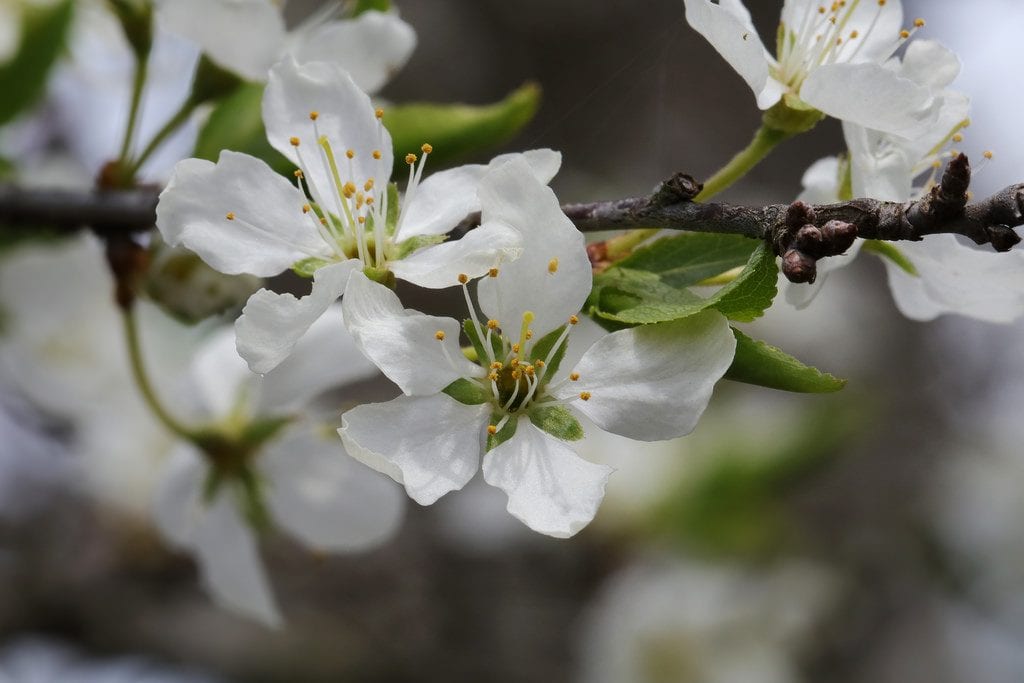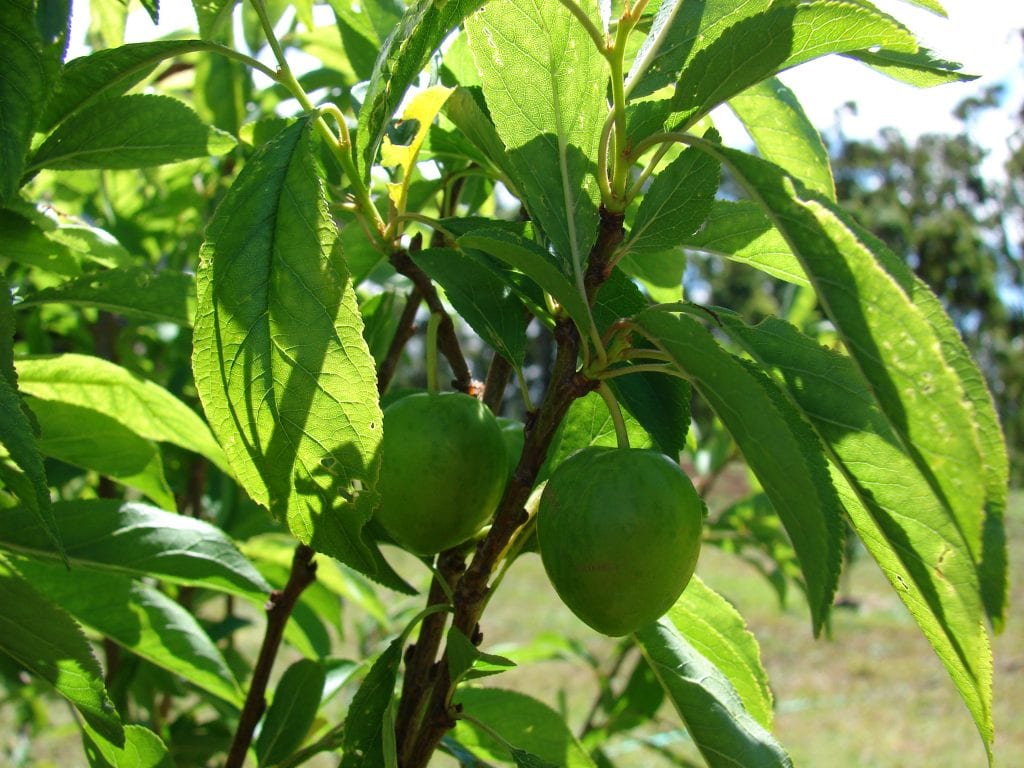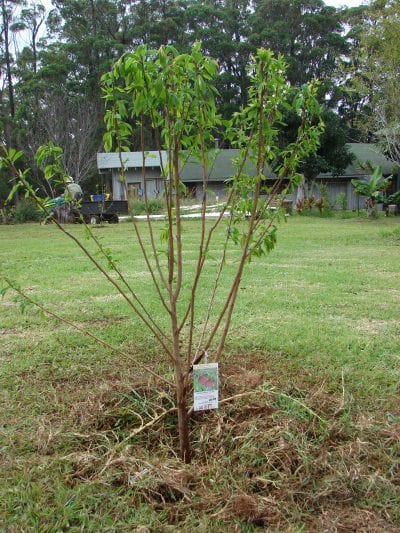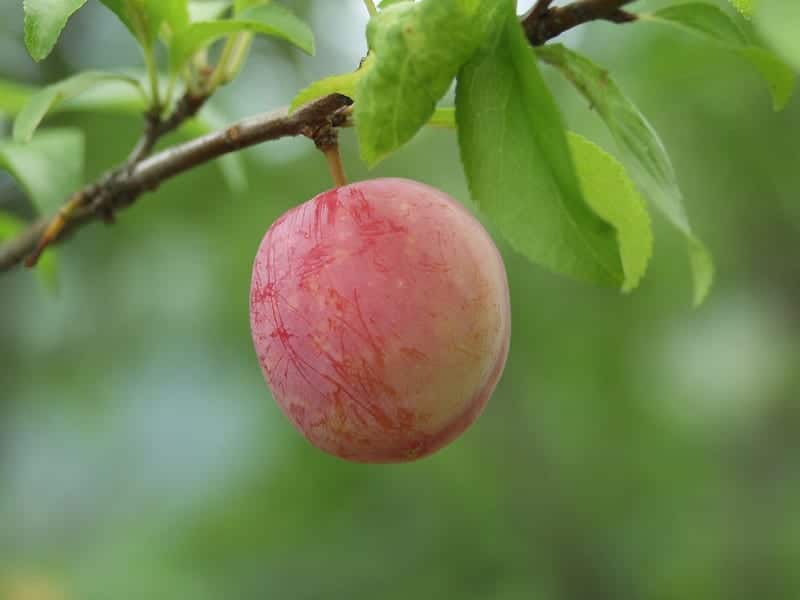
Image - Flickr / ashitaka
El japanese plum It is a tree that has it all: it is very ornamental, easy to care for and, if that weren't enough, it produces edible fruits. In addition, over time it gives very good shade, and is perfect for temperate-cold climate gardens.
If you want to know everything about him, then I will tell you what are its characteristics and how to always keep it healthy.
Origin and characteristics

Image - Wikimedia / Forest & Kim Starr
Our protagonist is a deciduous tree native to China and naturalized in Japan whose scientific name is prunus salicina. It is popularly known as Chinese plum or Japanese plum. Reaches a height of 10 meters, with large leaves 6-12cm long by 2,5-5cm wide, greenish in color and with a serrated margin.
The flowers are about 2cm in diameter and are made up of five white petals. It blooms in spring, just before or during the budding of the leaves. The fruit is a drupe 4-7cm in diameter, with pinkish yellow pulp.
What are their cares?
If you want to have a copy, we recommend you take care of it in the following way:
Climate
Grows in temperate climates, with frosts in winter. It needs to spend about 700-1000 cold-hours to be able to bear fruit.
Location
Place your tree outside, in full sun. It does not have invasive roots, but it is advisable to plant it at a distance of 5-6 meters from pipes, soil and others so that it can have a good development.
Earth

Image - Wikimedia / Forest & Kim Starr
- Flower pot: advisable to use growing medium for acidic plants (get it here) mixed with 30% perlite (for sale here).
- Garden: grows in acidic soils (pH 4 to 6), rich in organic matter and with good drainage.
Irrigation
The frequency of irrigation will vary greatly depending on the climate and the time of year in which we are. And, for example, you don't water the same amount of times in a very hot and dry area as in a rainy one. Thus, taking into account that the Japanese plum does not like waterlogging and that, in fact, it can be quite harmful, It is advisable to check the humidity of the soil before watering.
To do this, you can do any of these things:
- Using a digital moisture meter: when introduced into the ground, it will instantly tell you how wet it is.
- Introduce a thin wooden stick: if when you extract it, it comes out with little adhering soil, you can water.
- Weigh the pot once watered and again after a few days: this of course can only be done if it is grown in a container.
Wet soil weighs more than dry soil, so this difference in weight serves as a guide for when to water. - Dig about two inches to the side of the tree: if at that depth you see that the earth is darker and cooler, do not water.
In case you have doubts, wait a couple more days before watering.
By the way, important: do not wet the leaves when you water, only the soil.
Subscriber
From early spring to late summer It must be paid monthly with Organic fertilizersand guano, compost or mulch. Use liquid fertilizers and follow the instructions specified on the container if you have it in a pot; in this way, the drainage will remain good.
Pruning
Late winter You have to remove dry, diseased, weak or broken branches. Likewise, you can take advantage of to cut those that are growing too much, giving it a rounded or parasol appearance.
Do not forget to disinfect the tools before and after use, for example with a few drops of dishwasher or pharmacy alcohol.
Multiplication
It multiplies by seeds in winter, following this step by step:
- The first thing to do is fill a pot with growing medium for acidic plants.
- Then, it is watered consciously.
- Afterwards, a maximum of two seeds are placed in the pot.
- The next step is to cover them with a layer of substrate so that they are not exposed.
- Next, sprinkle with copper or sulfur to prevent the appearance of fungus.
- Finally, the pot is placed outside, in semi-shade.
If all goes well, they will germinate throughout the spring.
Harvest
The fruits harvested in summer or early fall. Once harvested, they are kept for 2-5 weeks at 0º with a relative humidity of 90-95%.
Rusticity
The Japanese plum resists frosts of up to -18ºC, but it cannot live in tropical climates.
What uses does it have?

Image - Wikimedia / zeimusu
Ornamental
In reality, all Prunus look great in gardens, although I confess that species from Japan and China, such as the prunus salicina, they are my weakness. When they bloom they are quite a show.
Culinary
When producing edible plums, it is a very interesting fruit tree. It can be consumed fresh, or as a flavoring.
Medicinal
The fruits are a source of Antioxidants.
And with this we are done. What did you think of the Japanese plum? Do you dare to have one?
Hello, I found a tree similar to the fruit of the Japanese plum and I still have the doubt that it is a plum tree. It is very spectacular to see the leafy tree with pink and purple fruits
Good morning, I want to encourage you to buy two saplings of the Japanese Plum (Prunus Salicina). How can I get them ???
Thanks in advance for the information.
Hi Luigi.
I recommend you look at online nurseries. If you are in Spain, you can ask JarderíaKuka, ElNouGarden, Plantas Coruña. And if not, maybe on ebay they will sell.
Greetings and good luck!